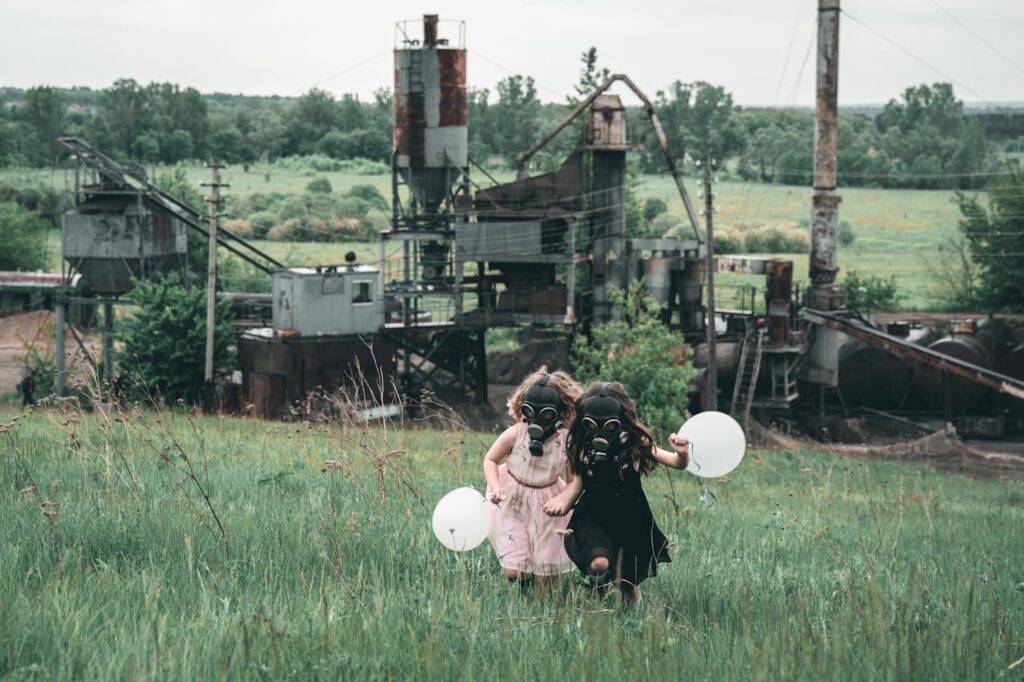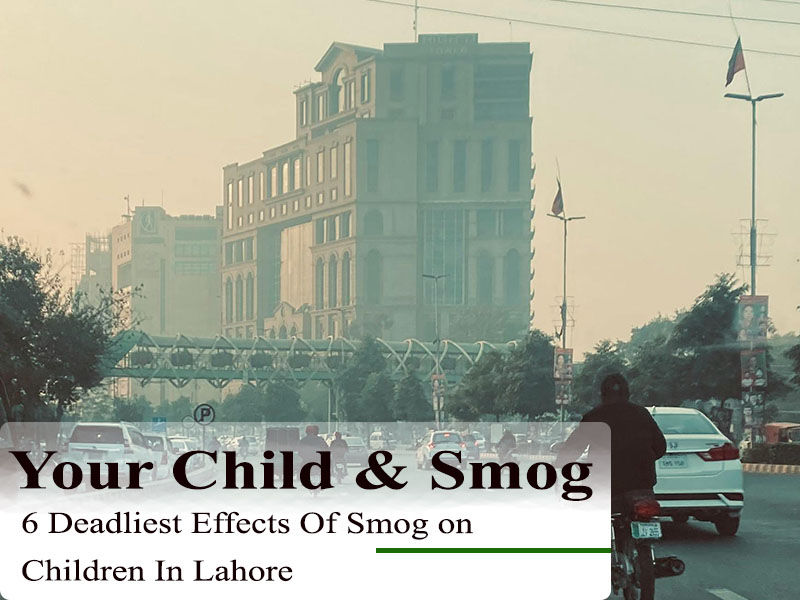Table of Contents
Effects Of Smog On Children’s Health
The Effects Of Smog on children are particularly alarming, as they are more vulnerable to the adverse effects of air pollution compared to adults. The combination of developing respiratory systems, higher breathing rates, and more outdoor activity makes children especially susceptible to the health risks posed by poor air quality. Here’s a detailed look at how smog endangers children in Lahore:

1. Impact on Respiratory Health
Children’s lungs are still developing, making them more sensitive to the harmful effects of pollutants like particulate matter (PM2.5 and PM10) and nitrogen dioxide, which are prevalent in smog. Exposure to these toxic substances can lead to:
- Acute Respiratory Infections: High levels of air pollution can cause respiratory infections, such as bronchitis and pneumonia, which are particularly dangerous for young children. The fine particles in smog can penetrate deep into the lungs, leading to inflammation and infection.
- Asthma Exacerbation: For children who already have asthma, exposure to smog can trigger more frequent and severe asthma attacks, which can be life-threatening if not managed promptly. Even children without a history of asthma are at a higher risk of developing the condition due to prolonged exposure to polluted air.
- Long-term Lung Damage: Repeated exposure to smog can result in permanent damage to the developing lungs of children, potentially leading to reduced lung function as they grow older. This can make them more prone to respiratory problems later in life.
2. Eye and Throat Irritation
Children often experience eye irritation and throat discomfort during smoggy days due to the high concentration of airborne pollutants. The symptoms may include:
- Burning or Watery Eyes: The fine particles and chemicals in smog can irritate the sensitive membranes of the eyes, causing redness, itching, and watering. This not only causes discomfort but may also affect children’s ability to concentrate in school.
- Sore Throat and Coughing: Pollutants inhaled during outdoor activities can irritate the throat, leading to a persistent sore throat, dry cough, and in some cases, difficulty swallowing. This can make eating and drinking uncomfortable for children.
3. Compromised Immune System
The presence of harmful pollutants in the air can weaken children’s immune systems, making them more susceptible to infections. This compromised immune function can result in:
- Frequent Illnesses: Kids exposed to smog are more likely to fall ill repeatedly, as their bodies struggle to fight off bacteria and viruses. This can lead to an increased number of absences from school and missed educational opportunities.
- Delayed Recovery: When children do get sick, their recovery may be slower because the immune system is already overburdened by the toxins in the air. This can further weaken their health, creating a cycle of illness that becomes difficult to break.
4. Disruption of Daily Life and Physical Development
The smog in Lahore can significantly disrupt children’s daily routines and developmental activities:
- School Closures and Missed Learning Opportunities: During periods of severe smog, schools are often forced to close as a safety measure, interrupting the academic schedule. Even when schools remain open, outdoor activities such as sports and physical education are typically restricted, depriving children of essential physical exercise.
- Impact on Physical Growth: Physical activities are crucial for the growth and development of children. When outdoor activities are limited due to smog, children may not get the exercise they need, which could hinder their physical development, affect their fitness levels, and increase the risk of obesity.
5. Psychological Effects Of Smog
The persistent threat of smog and the associated health risks can also have psychological Effects Of Smog on Children are
- Anxiety and Stress: Living in a city where air quality frequently becomes hazardous can create anxiety and stress in children, particularly those who suffer from asthma or other respiratory conditions. The fear of having an asthma attack or falling sick due to air pollution can lead to heightened stress levels.
- Social Isolation: Restrictions on outdoor play can make children feel isolated, as they miss out on social interactions with their peers. This lack of social engagement can negatively impact their emotional well-being, leading to feelings of loneliness and depression.
6. Increased Risk of Developmental Disorders
Effects Of Smog as studies have shown a link between prolonged exposure to air pollution and developmental disorders in children, including cognitive delays and learning difficulties. The toxins present in smog can affect brain development, potentially leading to:
- Reduced Cognitive Performance: Exposure to air pollutants has been associated with diminished cognitive function in children, which can manifest as difficulties in concentration, memory problems, and reduced academic performance.
- Higher Risk of Neurodevelopmental Disorders: There is evidence suggesting that air pollution can increase the risk of neurodevelopmental disorders such as attention deficit hyperactivity disorder (ADHD) and autism spectrum disorder (ASD). Although the exact mechanisms are still being studied, the link between air quality and brain health is a cause for concern. (Effects Of Smog )
The alarming effects of smog on children’s health in Lahore underscore the urgent need for stringent air quality control measures, awareness campaigns, and protective actions, such as providing air purifiers in schools and encouraging the use of face masks. Without effective interventions, the youngest members of society will continue to bear the brunt of the city’s air pollution crisis, facing serious health consequences that could last a lifetime.
Conclusion
In conclusion, the effects of smog on children in Lahore are severe and multifaceted, with serious implications for their immediate health and long-term development. Children are particularly susceptible to respiratory problems, eye irritation, weakened immune systems, and cognitive challenges due to their developing bodies and higher exposure to outdoor air. The frequent disruption of daily routines, such as school closures and limited outdoor activities, not only impacts their education and physical growth but also affects their emotional and social well-being.
Effects Of Smog heightened the risk of developing chronic health conditions and potential developmental disorders emphasizing the urgency of protecting children from air pollution. It is essential for policymakers, healthcare providers, and communities to prioritize measures that safeguard children’s health, including improving air quality, enhancing public awareness, and promoting protective practices. Without significant action, the ongoing exposure to toxic air will continue to jeopardize the health and future of Lahore’s youngest residents.
If You want to read more on Smog Conditions In Lahore Click below

